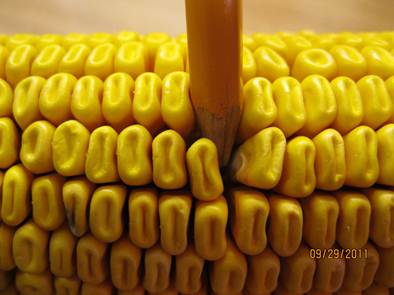Issues with Frost Damaged Corn and Soybeans

Thankfully most acres of corn and soybeans in our trade area missed a killing frost. The tops of the soybeans were damaged to the point that we have very small beans on the tops of the plants, but the rest of the plants are normal with the stem still feeding the pods, even though all or most of the leaves were damaged. Many soybeans were at or approaching physiological maturity, so very little or no damage occurred. Likewise, the upper leaves of the corn ear were damaged, but stalks did not freeze. This allows the ear to be fed moisture and nutrients to finish mostly normal kernel fill.
With frost damaged soybeans, some of the characteristics are green or elongated yellow soybeans that shrink to smaller than normal size after drying, higher moisture level (by 1 to 2 percent) than indicated by moisture meters and slower field drydown. Direct marketing from the field will probably create the highest discounts for green soybeans. Beans often lose their green color within two weeks of maturity, so allow field drydown if at all possible. The same is true of plants that were only partially frosted (generally on upper leaves).
Storage and Handling of Immature Soybeans:
Because immature soybeans are deceptively wet, problems often occur. Clean soybeans before storage to remove wetter weed seeds and plant parts. Two to four weeks of steady aeration will both reduce moisture levels and cause greenness to partially subside or disappear completely. Check the condition of stored soybeans frequently. If you bin dry beans, use temps of 130 degrees or lower.
However, the real challenges lie with harvesting, handling and storing corn that was not physiologically mature and the whole plant froze. “If” you can harvest immature corn separately from the rest of your crop it is a great advantage. But that is good in theory; harder in reality.
I was in a corn field yesterday where the ears were “rubbery” and had a loose kernel set, meaning the corn stalks were killed by frost and the kernels had more milk in them than starch. As the corn dries in the field, the kernels shrink if they are too immature (usually 50% milk line or less). When you see test weight consistently 52 pounds or less, it is likely that the plant was killed too early. The kernels are misshaped and soft and sometimes the kernels shell off the cob harder. You may have to tighten your concaves to do a better job of separating.
Drying and Storage of Immature Corn:
Use temps of 160 or lower when drying immature corn. Higher plenum temps destroy kernels that had poor integrity to begin with. Drying will not add much test weight and moisture testers often read low, so be careful if you’re storing. Remember – poor quality stores poorly. Expect storage life of poor quality to be about half the length of good quality corn. Drying to 14% is a good practice when binning, as it helps lower the risk of damage in the bin. Low test weight corn is chaffy and creates fines when handled, so screening before it hits the bin is a huge benefit. If you don’t screen, pull the cores out of your bins so you can get air through the entire bin to keep the grain at ambient temperatures. An inexpensive static pressure gauge on your bins is a good investment to ensure bins have proper air movement. Check your bins often and market low quality corn before warmer temperatures, to avoid the higher risk time in storage with lower quality grain.











